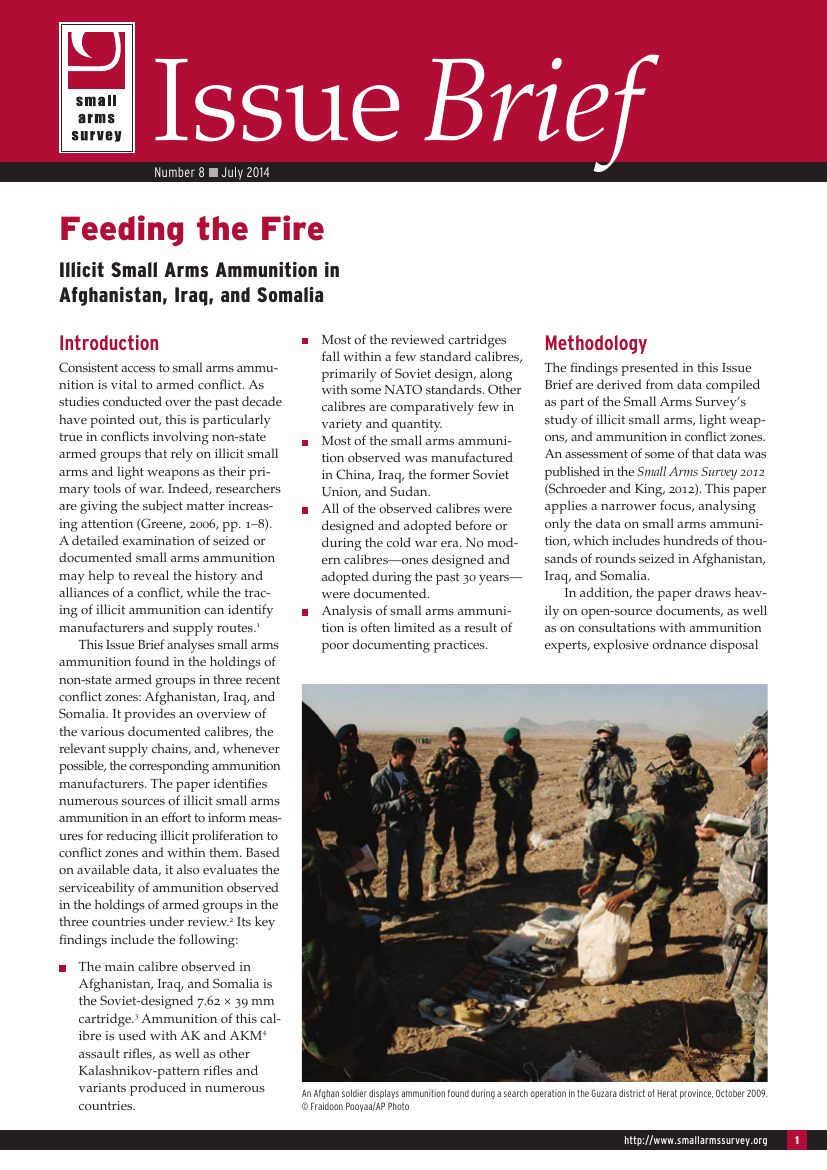
Feeding the Fire: Illicit Small Arms Ammunition in Afghanistan, Iraq, and Somalia (Issue Brief 8)
Consistent access to small arms ammunition is vital to armed conflict; this is particularly true in conflicts involving non-state armed groups that rely on illicit small arms and light weapons as their primary tools of war.
A detailed examination of seized or documented small arms ammunition may help to reveal the history and alliances of a conflict, while the tracing of illicit ammunition can identify
manufacturers and supply routes.
A new Small Arms Survey Issue Brief—Feeding the Fire: Illicit Small Arms Ammunition in Afghanistan, Iraq, and Somalia—analyses small arms ammunition found in the holdings of non-state armed groups in three recent conflict zones: Afghanistan, Iraq, and Somalia. It provides an overview of the various documented calibres, the relevant supply chains, and, whenever possible, the corresponding ammunition manufacturers.
Feeding the Fire identifies numerous sources of illicit small arms ammunition in an effort to inform measures for reducing illicit proliferation to conflict zones and within them. Based on available data, it also evaluates the serviceability of ammunition observed in the holdings of armed groups in the three countries under review.
Its key findings include:
- The main calibre observed in Afghanistan, Iraq, and Somalia is the Soviet-designed 7.62 × 39 mm cartridge. Ammunition of this calibre is used with AK and AKM assault rifles, as well as other Kalashnikov-pattern rifles and variants produced in numerous countries.
- Most of the reviewed cartridges fall within a few standard calibres, primarily of Soviet design, along with some NATO standards. Other calibres are comparatively few in variety and quantity.
- Most of the small arms ammunition observed was manufactured in China, Iraq, the former Soviet Union, and Sudan.
- All of the observed calibres were designed and adopted before or during the cold war era. No modern calibres—ones designed and adopted during the past 30 years—were documented.
- Analysis of small arms ammunition is often limited as a result of poor documenting practices.
Have your say about Small Arms Survey publications and products: take 5 minutes to fill out our questionnaire.